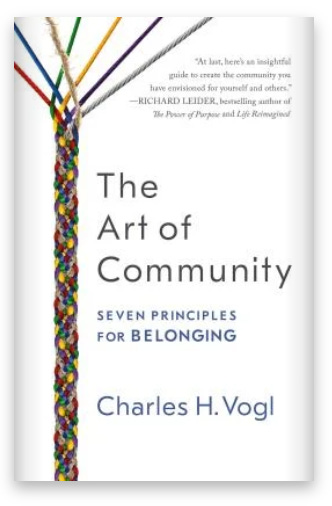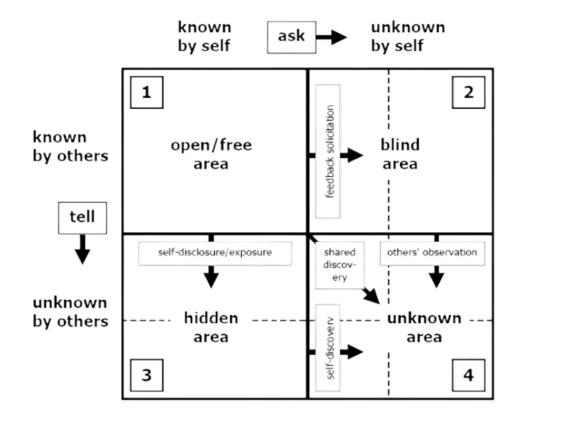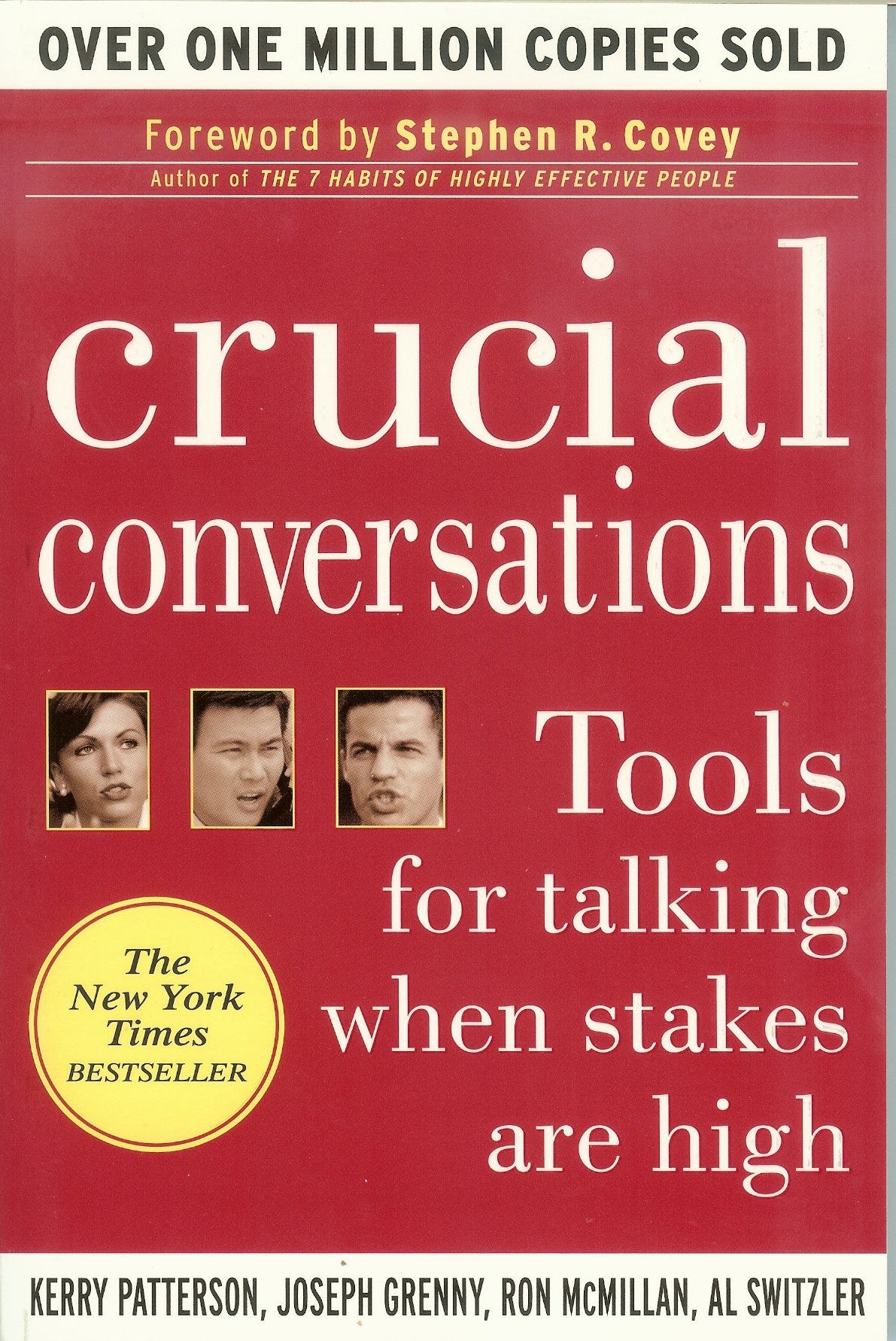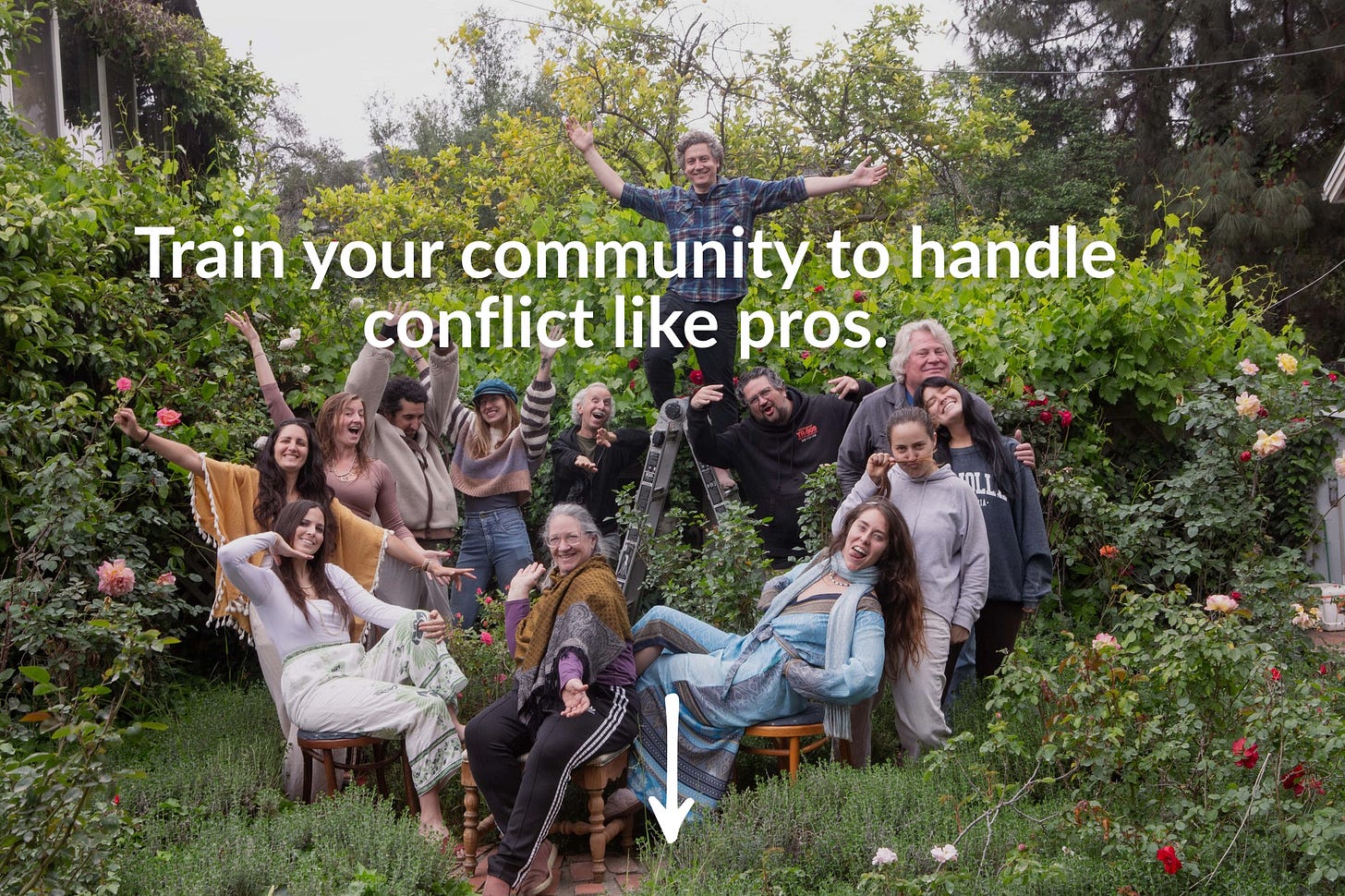Why You're Not Ready To Live In An Intentional Community (Yet)
Advice on how to treat "community" as a verb from a recovering hyperindividualist
Sometime between 11 and 12 years old, I was on crutches and my mom offered to open a heavy door for me. I stubbornly refused. Instead, I awkwardly shoved and hobbled my way through the door, determined to be no less capable than I was normally.
Fellow westerners can probably relate to growing up with the intense need to do everything yourself so you never have to rely on anyone. Asking for favors might even feel physically painful in your body.
For us, the idea of living in a close-knit community may seem impossible because you think you’ll have to surrender some part of your independence.
Or on the flipside, allowing yourself to depend on others might trigger shame for you about not being enough.
Well, having lived in different intentional communities for most of my 20s now — from artist collectives to ecovillages to incubator houses— I know that community can be medicine for the soul, and poison for the ego.
Intentional community is a bit like romantic relationships in the sense that the hard work is so worth the payoffs and highs. Also like romantic relationships, there are skills you need to learn such as communication tactics, self-reflection, and boundaries to truly be successful in your relations.
Allow me to download some community skills to your brain right now.

Community as a verb
Having positive community relationships is not just for the lucky — it’s a skill that can be learned and cultivated.
Here’s why community is a skill worth honing:
You experience deeper connection and feelings of “being held” even in your most vulnerable, aching moments.
Your gremlin self is not in the driver seat, and you can take the high road, even when you’d rather be petty with others.
You experience interdependence and allow yourself to receive instead of always giving or doing for yourself.
You actually get better at getting what you want from others and reaching resolution quicker.
How you can study the skills that make co-living and community life more fulfilling
1. Know what community skills are
Community-oriented values include but are not limited to:
Collaboration over competition
Empathy over projection
Relationship over acquaintance
Curiosity over conflict
Reciprocity over transaction
Individuation over sameness
You may have more suggestions for this list (drop them in the comments!), but for me these are the foundational ones.
The last one I find important because it is us being who we uniquely are within our community that makes it so vibrant and interesting. This is something I have learned on my personal journey.
Harmony is not worth sacrificing who I am, and hiding my authentic voice is fake harmony anyways.
So on the flipside, true community is not:
passive aggressivepeople pleasing so you can avoid conflicteveryone has to agree or be the same
Beyond just living as an individual participant in community, if your intention is to start a community or become a coliving operator, check out this diagram of the 50 necessary skills for community management.
2. Know your weak points
Finding the right community is a journey that starts with self-reflection.
Journal prompt questions:
What are your values, interests, and aspirations for living in community?
When were times you felt good in a community setting (i.e. athletics team, hobby club, activist group etc.)?
What are you afraid of others “finding out” about you?
What emotions does the idea of community bring up in you? Do you have past traumas around group settings?
Where do you struggle to relate to people? When does communication tend to break down for you and others?
Can you note any patterns you have with others that you want to change?
Community requires us to foster meaningful connections, practice empathy, and actively participate in shared spaces. To do that, we need to work on our own wholeness in order to show up in the collective.
The Johari Window is popular in ecovillages, because it points out the blind spots we have in our communication with others.
Activities to try:
→ Try a SWOT analysis and Johari Window to map your communication and community skills. Be aware that you will have blind spots, so ask others for feedback.
→ Pick a moderately challenging relationship you want to work on improving through these community skills, then work up to your toughest relationship. Experiment with the techniques presented here to get comfortable with them.
3. Train your community skills
Here are some common tools for navigating community relationships:
Self-awareness
Deep listening
Empathy-driven connection
Boundaries
Crucial Conversation Tools
Trainings
Each of these probably deserve their own article and breakdown of how to practice them. I will sum them up so you can do your own research.
Self-Awareness
It’s not what others do, it’s how you choose to react or respond to it. Knowledge of your own triggers, projections, and insecurities goes a long way in mitigating internal conflict before it manifests externally in your relationships.
Deep Listening
Deep listening is a skill that allows individuals to truly understand one another.
Effective communication happens when you are fully present with the other. Deep listening means giving your full attention, suspending judgment, and empathetically responding to what’s being shared.
This fosters trust, open dialogue, and collaboration.
Empathy-Driven Connection
When you practice deep listening, you collect enough information to act from a place of deep empathy.
Learning empathy-driven connection starts with actively assuming that the other person has the best intentions, and learning about their unmet needs.
The premise of Non-Violent Communication is built on the idea that conflicts arise from unmet needs, and the key to resolving them lies in identifying and addressing these needs.
Boundaries
Community isn’t all about the other people. It’s about you, too.
How well you nurture yourself, attend to your needs, and know your limits affects how much you can actually show up as your best self for the collective.
Be realistic in how much you can give, and know when to say no or take personal space. At Regen Tribe we say, “It’s not a ‘no’ to you, it’s a ‘yes’ to me”
Tools to Navigate Crucial Conversations
Harmonious co-living starts with healthy communication.
I want to share a book with you that completely upgraded the way I communicate with others, especially in those conversations that made me shrivel up inside.
It was originally recommended to me by an amazing friend John, who spent something like 20 years in an intentional community called the Lighthouse in Oregon before exiting to work on the urban Blue Zones initiative.
Wow. Let me tell you. This book? It’s the book.
It armed me with practical tools that came in handy acronyms like CPR (Content, Pattern, Relationship), STATE, CURE, and AMPP. I still use these tools today in my personal and professional relationships, and occasionally reread my notes about them to refresh.
I cannot recommend this book enough.
The name of the book is “Crucial Conversations: Tools for talking when stakes are high”. Surprisingly, it mostly centers on workplace and couple situations, but is universally applicable.
Other books include “Community: The Structure of Belonging”, “The Art of Gathering”, “Nonviolent Communication: A Language of Life: Life-Changing Tools for Healthy Relationships”, “Turning to One Another”, and “The Art of Community: Seven Principles for Belonging”.



Please comment other suggestions for books to read in the arena of communication in community. I am always open to finding new resources.
Trainings
Want to train your community to navigate conflict?
I just developed a 7-session training perfect for communities and colivings.
🌿270-page PDF presentation
🌿 7 workshop sessions that last ~90 minutes
🌿Group prompts, pair activities, and role play exercises
You’ll be able to teach your community how to listen deeply, communicate when it feels sticky, and grow stronger together.
If you’re eager to develop these skills, there’s a valuable resource library you can explore from the Foundation of Intentional Communities, IC.org.
They offer a range of courses designed to help you master the art of what they call communitarianism, but what I prefer to call ‘cooperative culture’.
Click here for a free PDF of the Cooperative Culture Handbook.
These courses cover topics like empathy-driven connection, deep listening, finding and creating communities, and conflict resolution. By investing in these courses, you’ll gain the knowledge and tools needed to thrive in shared spaces.
Some relevant courses include:



We also talked about Deep Listening and Non-Violent Communication, and they offer trainings on those too.
Non-Violent Communication Course
IC.org is a non-profit that has been studying and living community since 1949, so they are definitely worth learning from.
Share or save this post to get the word out about these resources.
Now what?
Community is obviously a skill worth studying and mastering. By honing these skills, you can unlock the potential for a more fulfilling, connected, and harmonious life within a community and within your own self.
Remember, it’s a journey, so pick one community skill you want to work on for the next month, and then let me know how it goes.








Exactly the overview of insights, skills etc. of living in a community I needed at this moment. I’m living in a tiny house community for three years now. And I love the tiny living and love my community. But I’m feeling lately that we need a moment of reflection, maybe of recalibrating the community because people left the community and new people moved in. This article helps me with communicating this feeling. And I just started as a “knowledge broker” between the educational institutions of my city and my neighborhood. My main task is translating the challenges of my neighborhood to educational and research projects to support the changes which are needed. I feel the most important challenge is creating more connections, more community. So also in this perspective, your article is very insightful. 🙏🤩
Wonderful article. Thank you. 🙏🏻💖